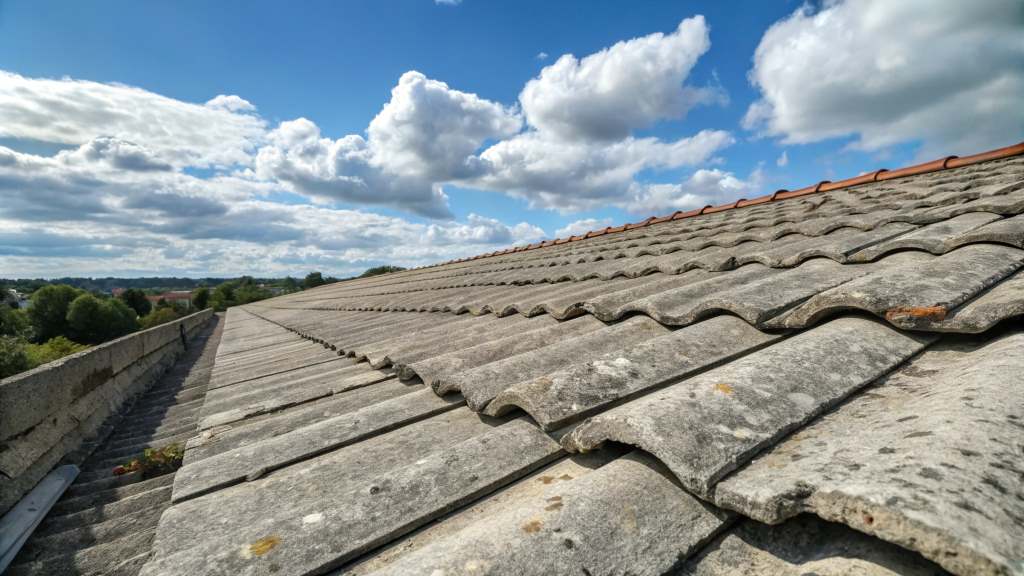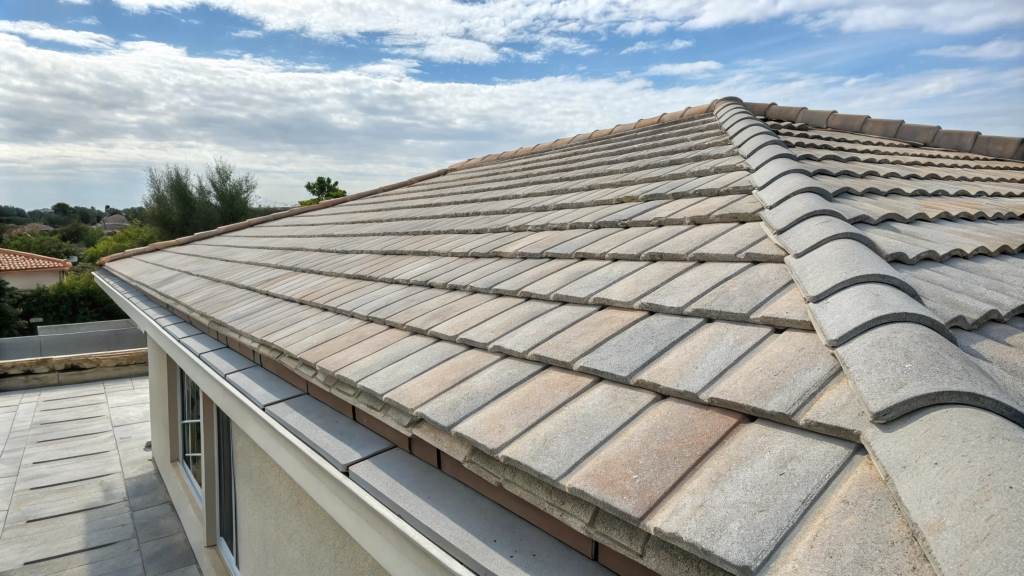Concrete tile roofs have become a gold standard for homeowners seeking a combination of beauty, strength, and longevity in their roofing systems. Unlike many other materials, concrete tiles offer a unique blend of aesthetics and performance that can last for decades. However, how long does a concrete tile roof last? What factors affect life of concrete tile roof, and how can you make the most of your investment?
In this in-depth guide, we’ll address these questions and provide actionable advice. By the end of this article, you’ll understand not only the lifespan of concrete tile roofs but also the considerations and practices that can help extend it significantly.
What Makes Concrete Tile Roofs Stand Out?
Concrete tile roofs are distinct for their ability to combine functionality and visual appeal. These tiles, made from a mixture of cement, sand, and water, undergo high-pressure curing to achieve strength and durability. This process results in a material that is well-suited to withstand the harshest weather conditions while maintaining its structural integrity.
Durability and Weather Resistance
One of the most notable aspects of concrete tile roofs is their exceptional resistance to external forces. They can withstand high winds, heavy rainfall, hail, and even fire, making them an ideal choice in regions prone to extreme weather.
For example, in Florida, where hurricanes are a recurring threat, concrete tile roofs are often preferred because they remain intact even during strong storms. Research shows that properly installed concrete tile roofs can withstand winds of up to 125 mph, which is equivalent to a Category 3 hurricane.
Aesthetic Versatility
Another key feature of concrete tiles is their aesthetic adaptability. These tiles are available in various styles, colors, and textures, including those that mimic natural slate or clay. This versatility ensures that homeowners can achieve the architectural look they desire, whether it’s a Mediterranean villa or a contemporary urban home.
Environmental Benefits
Concrete tile roofs are also eco-friendly. The production process uses recyclable materials, and their long lifespan reduces the need for frequent replacements, which in turn minimizes waste. Additionally, concrete tiles improve energy efficiency by providing better insulation, reflecting sunlight, and helping regulate indoor temperatures.
How Long Does a Concrete Tile Roof Last?
The lifespan of a concrete tile roof can range from 50 to 100 years, and in some cases, even beyond. Several factors determine where your roof might fall within this range. These include the quality of materials and installation, local climate, and the level of maintenance it receives over the years.
- High-Endurance Materials: Concrete tiles are designed to last for decades without losing their functionality. Unlike asphalt shingles that may deteriorate in 20–30 years, concrete tiles can serve multiple generations.
- Resistance to Degradation: Concrete does not rot, attract pests, or combust, making it inherently durable and resistant to decay.
Factors Influencing Concrete Tile Roof Lifespan
To understand why some concrete tile roofs last over a century while others falter much sooner, let’s explore the critical factors at play:
Quality of Installation
Even the most durable material will fail if installed incorrectly. During installation, tiles must be aligned and securely fastened to prevent movement or damage under stress. Improperly placed tiles can cause water pooling, leading to leaks or structural damage.
Climate and Environmental Conditions
Concrete tiles can handle most climates, but extreme weather can take a toll:
- Hot, Arid Regions: Tiles in desert climates, such as Arizona, are exposed to prolonged heat. However, concrete handles thermal expansion well, making it suitable for these conditions.
- Cold, Snowy Areas: While concrete tiles are resilient to freezing and thawing cycles, ensuring proper insulation and underlayment is vital in regions with heavy snowfall.
Maintenance Practices
Neglecting maintenance can drastically reduce the lifespan of a concrete tile roof. Simple tasks like clearing debris, replacing broken tiles, and cleaning gutters can prevent small issues from escalating into significant problems.
Underlayment Longevity
The underlayment, a waterproof layer beneath the tiles, typically has a lifespan of 20–30 years. If this layer deteriorates, water may seep into the roof, causing long-term damage to the structure. Regular inspections and timely replacements can significantly extend the roof’s overall lifespan.
Concrete Tile Roof Lifespan vs Other Roofing Materials
Concrete tile roofs consistently outperform many other roofing materials in terms of lifespan and durability. Let’s compare:
| Roofing Material | Average Lifespan | Cost (per sq ft) | Advantages | Disadvantages |
|---|---|---|---|---|
| Asphalt Shingles | 20–30 years | $3–$5 | Affordable, easy to install | Short lifespan, frequent maintenance |
| Metal Roofing | 40–70 years | $6–$12 | Lightweight, recyclable, energy-efficient | Prone to denting, high noise levels |
| Concrete Tile Roof | 50–100+ years | $10–$20 | Extremely durable, low maintenance | Heavy, requires strong structural support |
| Clay Tiles | 50–100+ years | $15–$25 | Aesthetically appealing, durable | High cost, brittle under heavy loads |
Concrete tiles strike a balance between durability, cost, and versatility, making them an excellent choice for homeowners who value long-term investment.
How to Maximize the Life of Concrete Tile Roof
Maintaining your concrete tile roof involves a proactive approach. Here’s a step-by-step guide to ensure it lasts as long as possible:
1. Regular Inspections
Annual inspections are essential for spotting potential issues early. A small crack or displaced tile can lead to extensive damage if ignored. Hire a professional to assess the roof’s condition, especially after severe weather events.
2. Routine Cleaning
Moss, algae, and debris accumulation can cause water retention, leading to tile degradation. Clean the roof using a gentle pressure washer or a soft-bristle brush. Avoid harsh chemicals that might corrode the tiles.
3. Protecting the Underlayment
The underlayment plays a crucial role in preventing water infiltration. Replace it every 20–30 years to ensure the roof remains watertight.
4. Avoid Unnecessary Foot Traffic
Walking on concrete tiles can cause cracks or breakage. If repairs or cleaning require roof access, use designated pathways or hire experienced professionals.
Benefits of Concrete Tile Roofs Beyond Longevity
Concrete tile roofs offer more than just a long lifespan. They enhance the overall functionality and comfort of a home in several ways:
Energy Efficiency
Concrete tiles reflect sunlight, reducing heat absorption. This property lowers cooling costs in warmer climates and improves overall energy efficiency. Studies indicate that homes with concrete tile roofs can reduce cooling energy consumption by up to 20% during peak summer months.
Soundproofing
The density of concrete tiles provides excellent soundproofing, reducing external noise such as rain, hail, or urban traffic. This makes them particularly appealing for homes near busy streets or airports.
Increased Property Value
Homes with concrete tile roofs are more attractive to potential buyers. A durable and aesthetically pleasing roof assures buyers of reduced maintenance costs and long-term reliability, often increasing the property’s resale value.
Challenges and Misconceptions About Concrete Tile Roofs
High Initial Costs
Concrete tile roofs have a higher upfront cost than materials like asphalt shingles. However, when you factor in their longevity and low maintenance requirements, the long-term savings often justify the initial investment.
Weight Concerns
Concrete tiles are significantly heavier than other roofing materials. Homes with weak structural support may require reinforcement before installation, adding to the initial cost. However, modern construction methods often account for this load, making weight less of a concern for newer buildings.
The Myth of Maintenance-Free Roofs
A common misconception is that concrete tile roofs are completely maintenance-free. While they require less upkeep than many alternatives, regular cleaning and inspections are still necessary to maximize their lifespan.
Conclusion
The life of a concrete tile roof is a testament to its durability, energy efficiency, and timeless appeal. While the upfront costs may seem significant, the longevity and minimal maintenance requirements of these roofs make them a worthwhile investment. Whether you’re planning a new build or considering a roof replacement, concrete tiles offer a winning combination of style and performance that stands the test of time.





